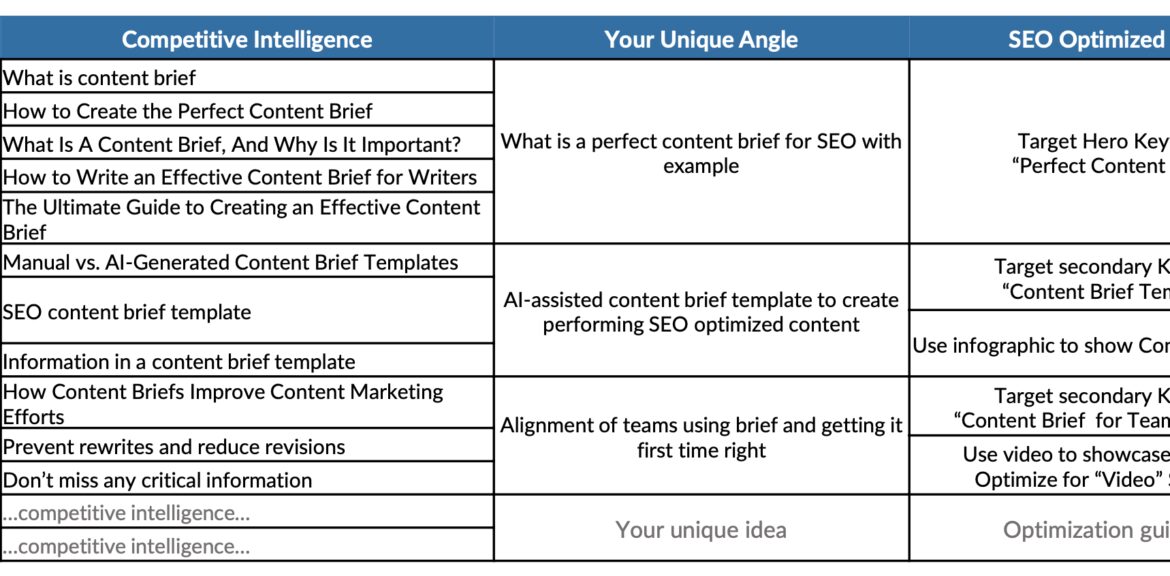Does aligning SEO goals with multiple teams and departments feel like herding cats?
To add fuel to the ever-extending timeline, you may have uninformed stakeholders who also need to provide their input.
Marketing, SEO, and content teams share many of the same goals, but how aligned are you in creating timely and consistently effective content?
It’s time to try the perfect SEO brief.
On June 22, I moderated a webinar with Ajay Rama, CEO of Alps.ai. He demonstrated how to create a well-coordinated brief that seamlessly connects your teams, elevates your content program, and outperforms your competitors.
Here is a summary of the webinar.
To access the entire presentation, complete the form.
Challenges With Producing High-Performing Content
As you scale, these creating content can become more challenging.
Many companies have difficulty staying on track, resulting in deteriorating content quality.
- Quality of content is highly subjective and hard to scale, as it depends on the content writer’s capability, which varies from person to person.
- Research on the topic takes too much time, and the research quality is inconsistent.
- Multiple stakeholders make aligning and executing a vision a challenge.
What’s needed then?
A content brief is a solution to addressing scaling challenges.
[Create the perfect content brief] Instantly access the webinar →
In reality, very few companies use content briefs.
Even when they use it, it isn’t comprehensive, high-level enough, or doesn’t provide the benefits an organization needs.
What An Effective Content Brief Covers & The Execution Steps
A well-structured brief can elevate your overall content performance.
Three steps address each aspect of the core pillars that make a solid piece of content.
[Discover the 3 core pillars of content creation] Instantly access the webinar →
Step 1: Research User Needs
Research the keyword landscape for your topic before you start writing. You’ll need to understand what queries people are typing into search engines.
Once you know this, you can finalize keywords with which you should optimize your content.
First, create a list of keywords for which you would like this page ranked.
- Primary keywords.
- Supporting keywords.
[See examples of each] Instantly access the webinar →
Step 2: Perform Competitive Research
The next step is creating quality content.
Competitive research can help you build quality content. You can achieve this by knowing:
- What competitors are covering.
- Titles and headers.
- Popular questions.
- Subtopics.
- How competitors are optimizing their content.
- Words and phrases.
- Elements that are optimized.
Aim for at least seven pages of comprehensive research.
Step 3: Optimize Your SEO Outline
Know the elements of how you plan to communicate your content to the search engines.
This can be achieved through:
- Keyword targeting.
- Addressing user queries.
- Identifying and targeting the SERP packs.
[Dive deeper into each step] Instantly access the webinar →
Here’s what your content brief should look like.
 iQuanti, June 2022
iQuanti, June 2022Structured research will allow your team to focus on creative aspects of content creation without wasting time on operational details.
[Slides] How We Create The Perfect SEO Brief That Aligns Teams & Beats Competition
Here’s the presentation:
Join Us For Our Next Webinar!
Small Business Marketing: How To Safely Try New Strategies
When it comes to your small business, how do you feel about taking risks? Learn how you can play it safe while taking risks by measuring the results of trying new marketing strategies.
Image Credits
Featured Image: Paulo Bobita/Search Engine Journal
Go to Source
Author: Heather Campbell




